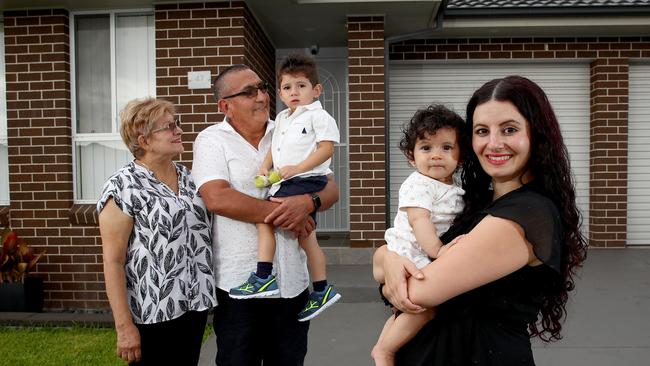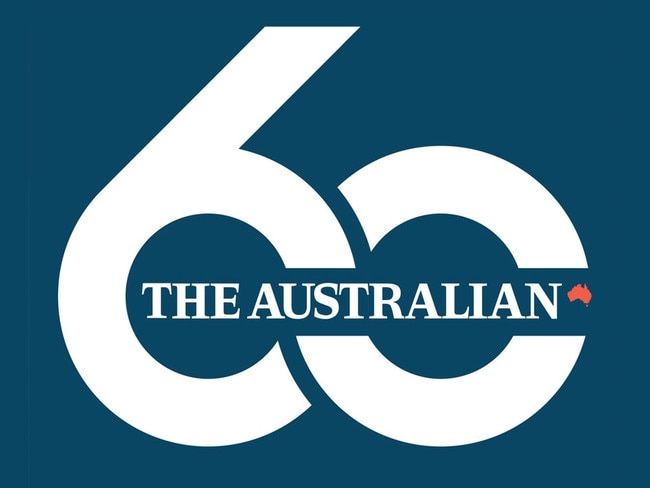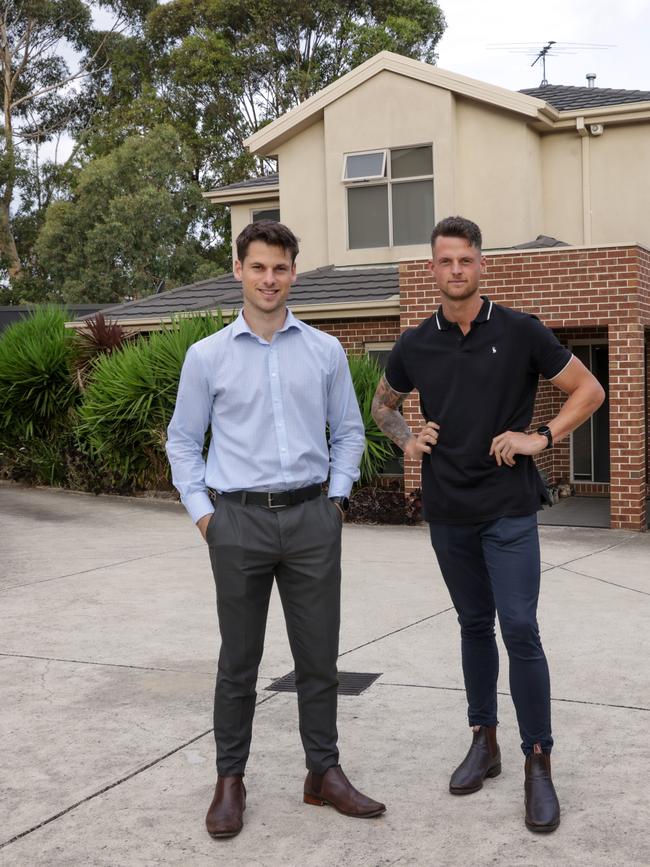Older Australians set to transfer wealth to younger generations
We are about to witness the biggest exchange of gifts and inheritances in human history as the number of current older Australians dwindle.

Death, and its countless financial tributaries, is a growth industry in Australia. Over the next 40 years, the number of deaths is projected to rise by 80 per cent, while the number of births is expected to increase by 33 per cent.
A wave of probate applications could, in time, inundate the courts. With the first of the baby boomers turning 80 within the next three years and the survivors of the so-called Greatest Generation that preceded them now in their 90s, we are about to witness the biggest exchange of gifts and inheritances in human history.
International studies have shown that over $100 trillion in assets will be bequeathed by boomers to their heirs by mid-century.
On average, each generation has been wealthier than the previous one at the equivalent age, but boomers have eclipsed all others, as they’ve been the main beneficiaries of the long post-war boom in economic growth, rising home values and steady accumulation of retirement nest eggs. Australian research suggests this transfer could be worth $3.5 trillion over the next 20 years.
According to the Australian Bureau of Statistics, at the end of March 2023 household net wealth stood at $14.8 trillion, including $10.1 trillion in land and dwellings, $3.5 trillion in superannuation reserves, $1.6 trillion in cash and deposits, $1.3 trillion in shares and $1.2 trillion in other assets (less $2.9 trillion in loans and other liabilities).
The 2023 Intergenerational Report estimates Australia has the fourth largest pool of retirement assets in the world, with total superannuation balances projected to grow from 116 per cent of GDP to around 218 per cent of GDP by 2063.
Wealth transfers, from older Australians to their children and, less frequently, grandchildren, are large, growing, and will reshape the nation’s finances over coming decades.
This is happening as the population ages and the burden of paying for the services the community values will fall on a diminishing pool of Gen Y and Gen Z workers, who are finding it more difficult to get into the residential market and stay there during an era of rising mortgage costs and expensive real estate.

In 1981, 70 per cent of Australians in their early 30s owned a home; 40 years later, the ratio slipped to 50 per cent.
As former Reserve Bank of Australia governor Ian Macfarlane says, “the story of inequality of wealth in Australia is the story of incredible growth in property prices that has benefited older Australians at the expense of younger Australians”.
“If we knew the current degree of inequality in income and wealth, we would not have implemented the current structure of taxes,” he argues. “Our system is very generous when it comes to taxing wealth and capital gains, and pretty tough when it comes to taxing wages and salaries.”
Treasury’s Retirement Incomes Review (2020) found Australians are dying with much of their savings intact, due to a fear of being caught short of retirement funds and a lack of trusted products to draw on home equity to bankroll lifestyle.
Surveys of seniors show the principal residence, excluded from the pension assets test, is seen as a safety net for adverse events and, less importantly, as a bequest to children. In any case, about half of all inheritances immediately go to the children of the deceased. The remainder went to a surviving spouse or to other family and friends. Only about 2 per cent went to charity. So far, the grandkids are seeing very little of those inheritances, as less than 5 per cent of that wealth is bequeathed to people born after 1980.
In a 2021 research paper, “Wealth Transfers and their Economic Effects”, the Productivity Commission estimated that in 2018, $120bn was passed on, more than double the inflation-adjusted amount at the start of the century.
To put that in perspective, that’s more than the pre-pandemic annual amount the Australian government spent on health and education.
The average gift, that is a transfer when the benefactor is alive, is $8000 (median: $1000), while the average inheritance is $125,000 (median: $45,000).
The research noted older Australians have more wealth and are projected to hold even more in coming years, due to the inexorable rise in home values and financial assets, such as bank deposits, shares and superannuation. They will also account for a higher proportion of deaths. As well, there’s been a consistent fall in fertility rates, from a peak of 3.55 babies per woman in 1961 to the current 1.66. So fewer children will benefit from the transfers. Put this together and over the next three decades, the commission estimates a fourfold real increase in the total value of inheritances when the last of the boomers are pushing their walking frames to 100 years.
On the surface, there’s a mismatch between these transfers and needs. On average, Australians receive an inheritance in their 50s, when they are settled, have probably paid off their mortgage, are established in careers, and their children are more independent.
Gifts are received at a much younger age, usually under 25, and are often associated with life’s milestones, such as marriages or the purchase of a first home.
‘Our system is very generous when it comes to taxing wealth and capital gains and pretty tough when it comes to taxing wages and salaries.’

Conventional wisdom suggests that wealth transfers make the richest Australians better off.
But, given that these inheritances come later in life, the commission’s study found they don’t make a huge difference to overall economic mobility. It estimates about 36 per cent of the so-called “intergenerational persistence in wealth” (that is, the association between adult children’s wealth and their parents’ wealth) among those whose parents died in the past two decades was due to inheritances. The commission noted that the values, work ethic, education, networks and other opportunities well-off parents provide for their children were more important for opening up life’s choices and options about career and families than the wealth transfers.
According to commissioner Catherine de Fontenay, who co-authored the commission’s research paper, the most surprising finding was that relatively small bequests make a huge difference to the lives of poorer people.
“The less well-off get a much bigger boost from wealth transfers,” says de Fontenay.
“That is, wealth transfers increase the share of wealth held by poorer Australians, reducing relative wealth inequality. And we are not an outlier. This finding is replicated in every other country studied around the world.”
The commission found the poorest 20 per cent received a wealth boost that was about 50 times larger than it was for the wealthiest 20 per cent, although that quintile’s dollar-for-dollar gain was much larger.
Over time, the commission’s projections show wealth transfers will continue to reduce the share of wealth held by the richest Australians. But de Fontenay says in Australia the moderating effect is quite small. Asset price growth has a much larger impact on relative wealth inequality. A mere one-percentage-point change in the rate of return to housing wealth – a fraction of the average annual historical return – would have a much larger impact on relative wealth inequality.

Plus, the tax transfer system has a much greater effect on reducing income inequality. The commission found the annual flow of welfare payments is three times the annual flow of wealth transfers. Yet welfare payments reduced immediate-term relative wealth inequality by 20 times more than wealth transfers, and also reduced immediate-term absolute wealth inequality.
Intergenerational transfers, however, can be make or break for aspiring homeowners, and the so-called bank of mum and dad can come in the form of help with a deposit, living at home, or in staying in a family-owned rental property at reduced rent to save for a deposit.
A paper for the Australian Housing and Urban Research Institute, an independent research network, surveyed young people in Sydney and Perth and found direct transfers are only one of many ways wealth is passed on intergenerationally.
The paper, titled “Pathways to home ownership in an age of uncertainty”, said: “Whereas previously intergenerational transfers assisted homeowners to pay off their mortgages before retiring, today accessing such transfers, whether direct or in-kind, is becoming a condition of possibility for home ownership.
“For many aspiring first-home buyers, the central factor determining access to a housing deposit is parental housing wealth, rather than income levels and spending or savings habits,” the AHURI study said.
“Current housing policies risk assisting those who already have the means for a deposit, while excluding others who do not have access to parental wealth, such as those from family rental and/or migrant backgrounds.”
But as the latest Intergenerational Report makes clear, an ageing Australia is going to be more expensive to run, with increased costs for health and aged care, and a rise in the dependency ratio, or retired people per working-age population – even with the burgeoning pool of retirement savings.
The Business Council of Australia argues in its “Seizing the Moment” reform blueprint, “if Australia continues on its current economic trajectory, we risk bequeathing future generations a reduced inheritance”.
The BCA says by 2061 there will be only 2.7 workers for every person over 65, compared with 3.8 today and 6.6 in the early 1980s.
“The stakes are high. If income tax maintains its current share of total taxes (and the overall tax burden is not significantly lower), it will mean a much increased burden on future income earners,” the BCA paper said.
“This will exacerbate intergenerational equity issues and damage the aspirations of younger workers who will need to fund an ageing population and repay Australia’s debt.”
The big business lobby advocates more heavy lifting by indirect taxes, such as the GST, and lower personal income and company tax rates. Ageing, entrenched inequality and other trends will throw up delicate policy issues that governments have either been too afraid to deal with or that have been rejected by voters, most recently in 2019 when Labor proposed a range of tax measures to redistribute income, including changes to the treatment of capital gains, negative gearing of property and family trusts.
Ian Macfarlane wonders why our young people aren’t rioting in the streets about housing affordability and the looming fiscal burden. There will soon be intense pressure on governments from younger generations, who will make up a larger share of the electorate in coming years, to consider estate taxes, to ask well-off retirees to pay more tax on their superannuation earnings, to seek more self-provision for aged care and health costs, and to reduce the tax burden on workers at all levels of income. There may be calls for a change to the pension assets test, perhaps placing a limit on the value of a home that is exempted before benefits are withdrawn.
A 2021 OECD report found inheritance, estate and gift taxes could play a stronger role in addressing inequality and improving public finances in the wake of the Covid-19 pandemic.
On average across the 37 member nations, the inheritances and gifts reported by the wealthiest 20 per cent of households are close to 50 times higher than those reported by the poorest quintile of households. Two dozen OECD countries currently levy inheritance or estate taxes, but these typically raise very little revenue (only 0.5 per cent of total tax revenues, on average, across the countries that levy them).
Macfarlane and other influential thinkers argue an inheritance tax is overdue. But he knows it will be a near impossible sell to today’s electorate, where boomers still exert a hefty influence.
“An inheritance tax is the least disruptive form of taxation you can devise,” Macfarlane says.
“Why should you tax income, which you have to work hard to earn, and not bequests, which are simply a gift? But people just sort of accept it as the way of the world. It didn’t use to be like this, and it makes no economic sense.”






To join the conversation, please log in. Don't have an account? Register
Join the conversation, you are commenting as Logout